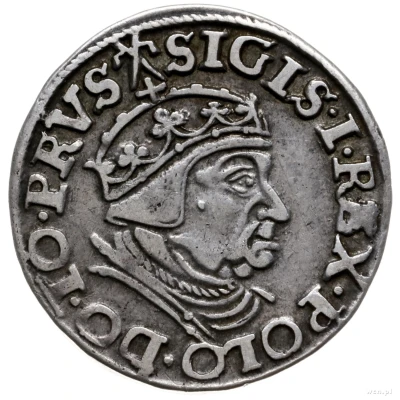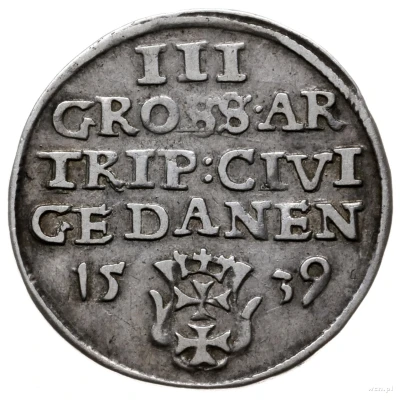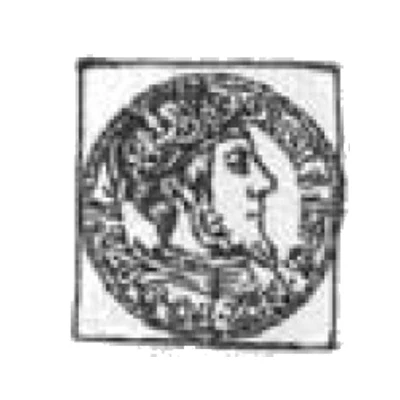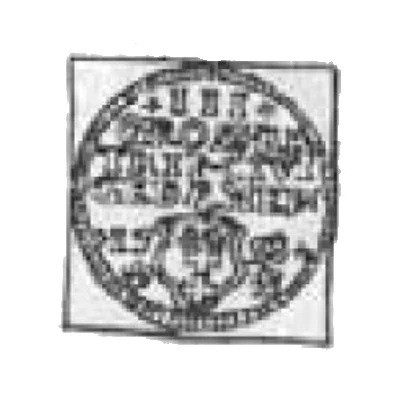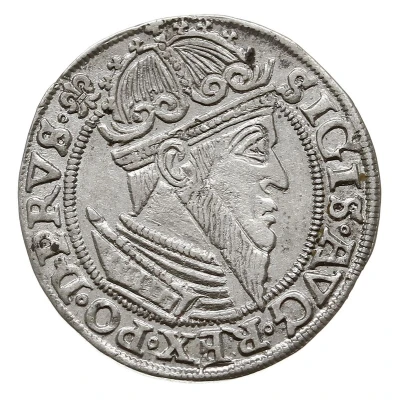
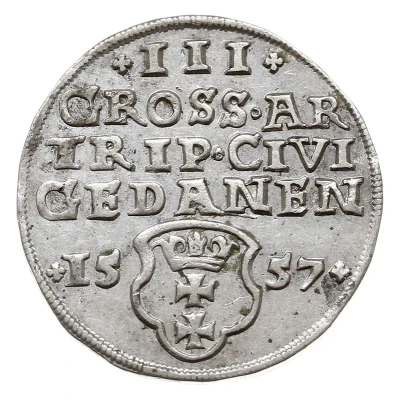

© Warszawskie Centrum Numizmatyczne s.j.
Trojak gdański - Sigismund II Augustus Gdańsk
| Silver | 2.6 g | 21 mm |
| Issuer | Kingdom of Poland |
|---|---|
| King | Sigismund II Augustus (Zygmunt II August) (1548-1572) |
| Type | Standard circulation coin |
| Years | 1557-1558 |
| Value | Trojak = 3 Grosze |
| Currency | First Złoty (1526-1572) |
| Composition | Silver |
| Weight | 2.6 g |
| Diameter | 21 mm |
| Shape | Round (irregular) |
| Technique | Hammered |
| Demonetized | Yes |
| Updated | 2024-10-07 |
| Numista | N#175284 |
|---|---|
| Rarity index | 95% |
Reverse
The writing at the top, the middle part at the bottom with the city's emblem in the middle, around it left one half, right the second half of the date.
Script: Latin
Lettering:
III
GROSS•AR
TRIP•CIVI
GEDANEN
15 57
Unabridged legend: III Gross Argent Trip Civitas Gedanensis
Translation: III three silver Groschen from the city of Danzig
Comment
Note: There are a lot of types of this coin, the sections at the top describe the one pictured there. Some of the other types are pictured below.
Iger G.57.1.a
Pictures: WCN
Iger G.57.1.b
Iger G.57.2.a
Iger G.57.2.b
Iger G.57.2.c
Iger G.57.2.d
Iger G.57.2.e
Iger G.57.3.a
Iger G.57.3.b
Iger G.57.3.c
Iger G.58.1.a
Interesting fact
The Trojak gdański was a silver coin minted in the city of Gdańsk during the reign of King Sigismund II Augustus of Poland in the 16th century. What's interesting about this coin is that it was minted using a unique technique called "silver plating," where a thin layer of silver was applied to a copper or bronze core. This technique was used to create the illusion of a solid silver coin, while actually using less expensive metals. This way, the coin still had the same value as a solid silver coin, but it was cheaper to produce. This technique was commonly used in Europe during the Renaissance period to create coins that looked like they were made of precious metals, but were actually made of less expensive materials.
